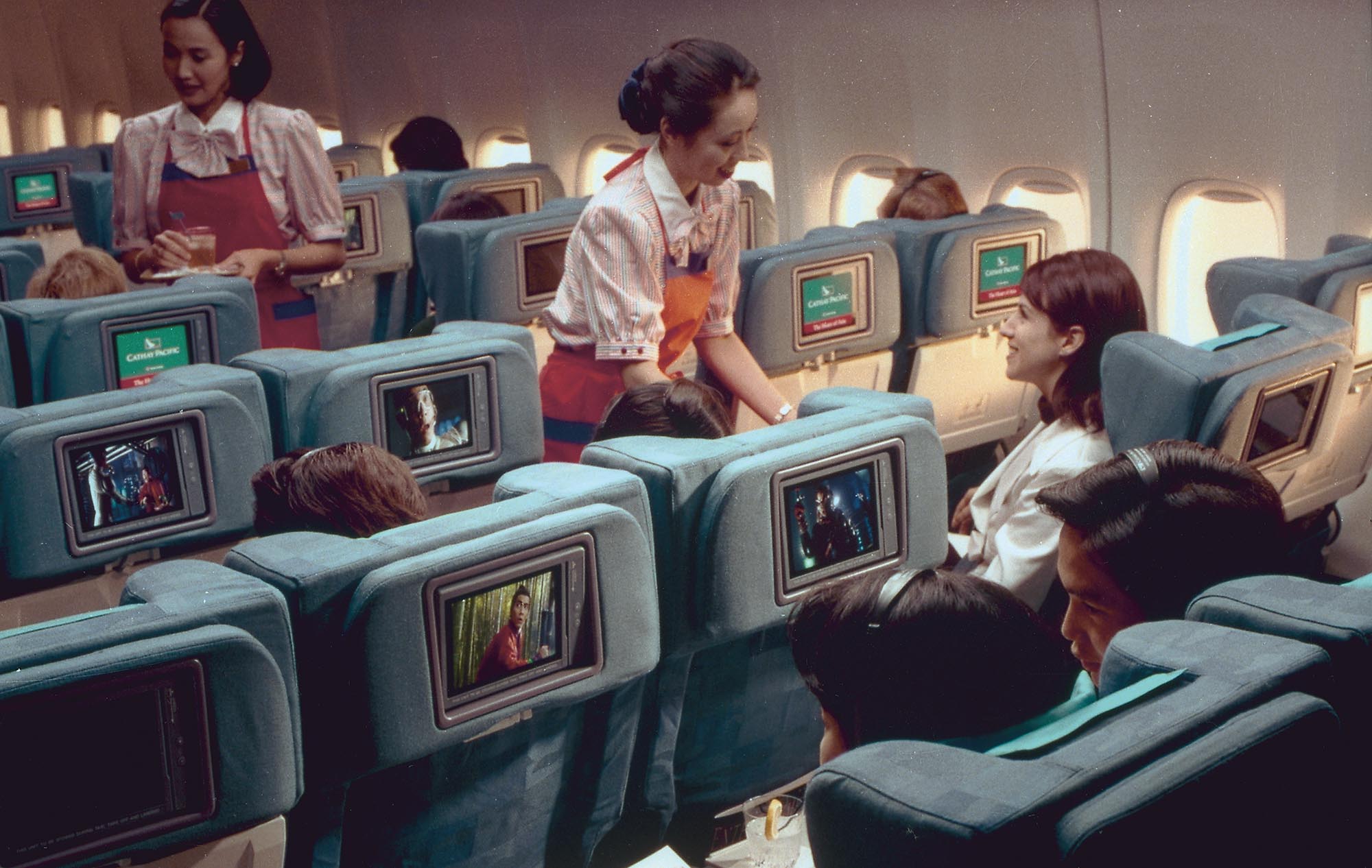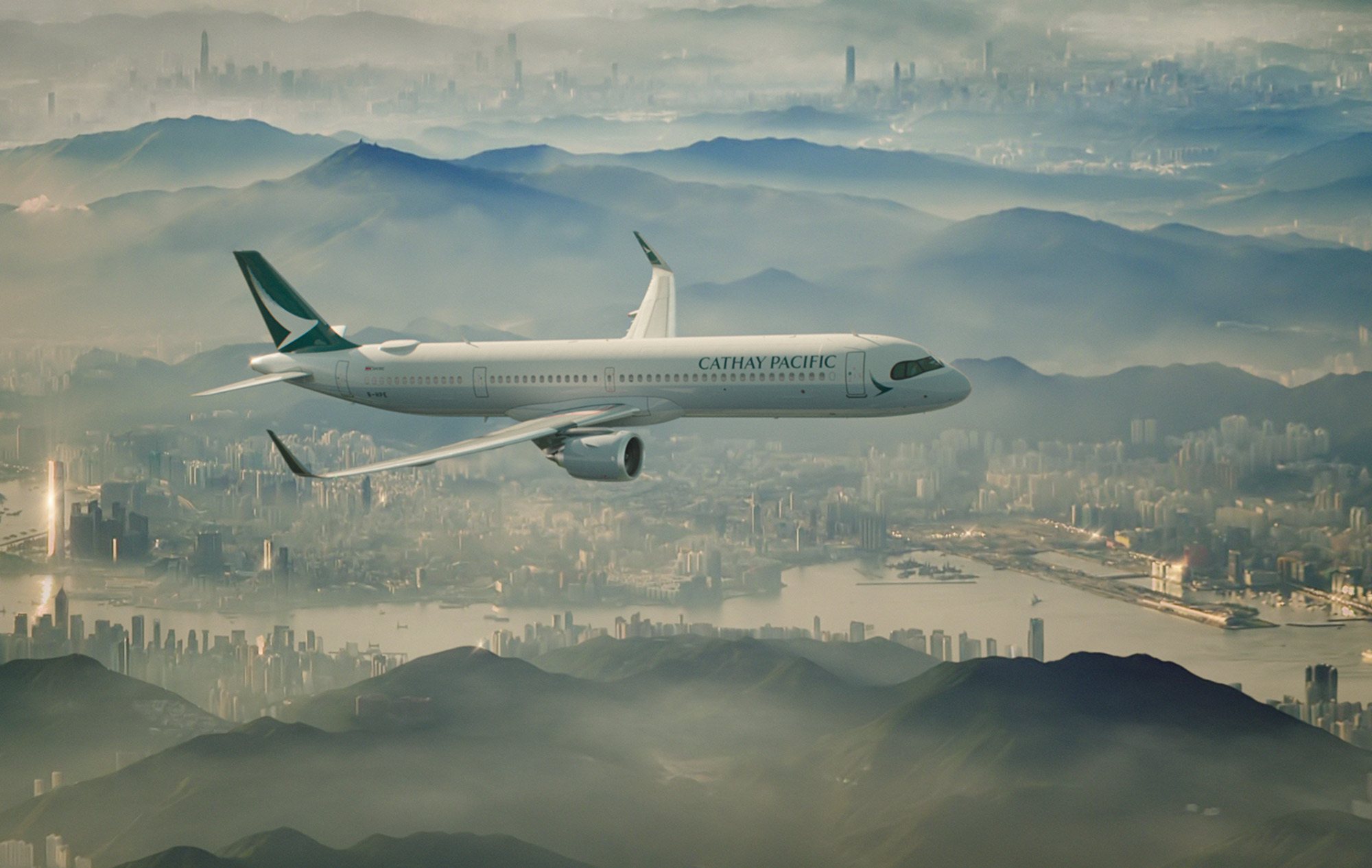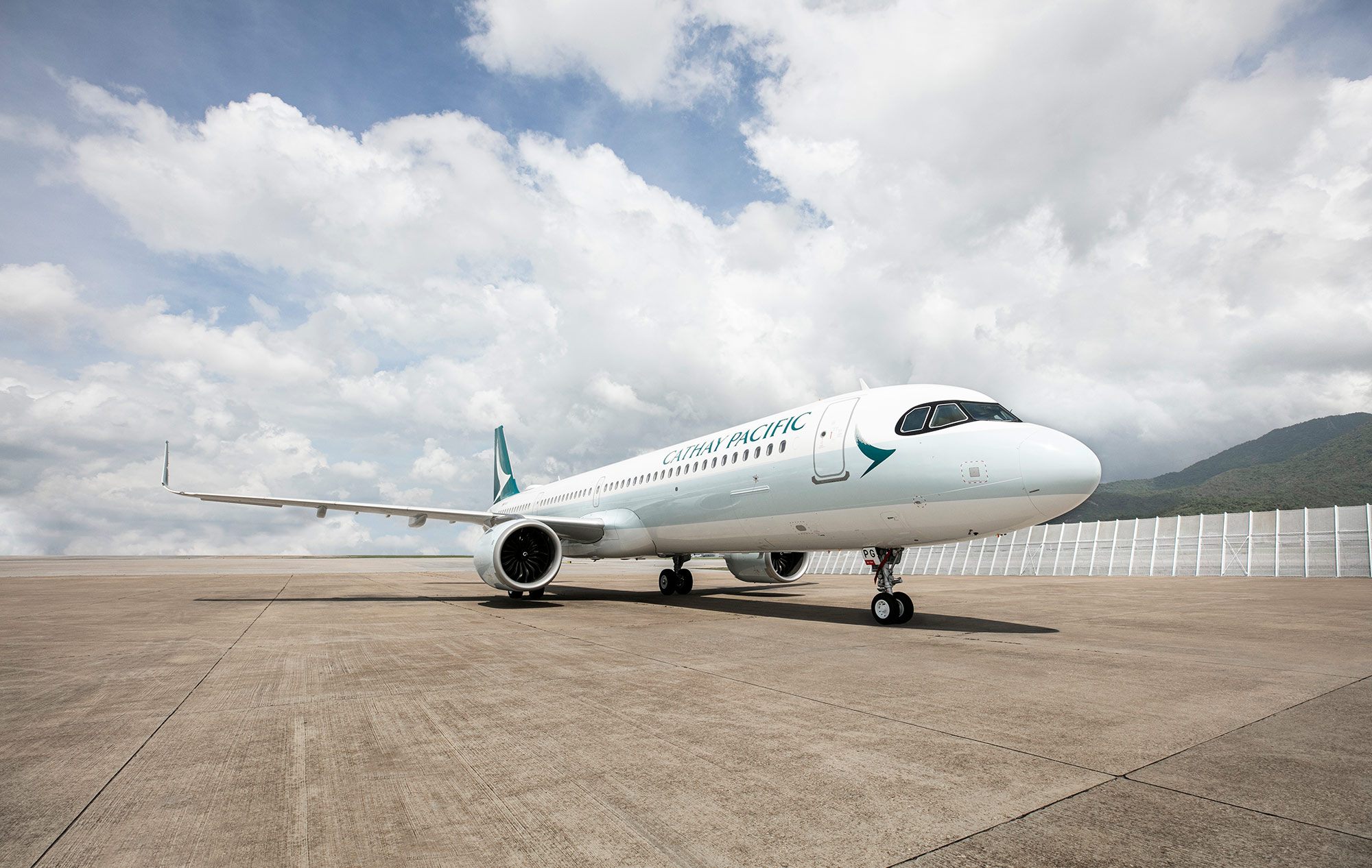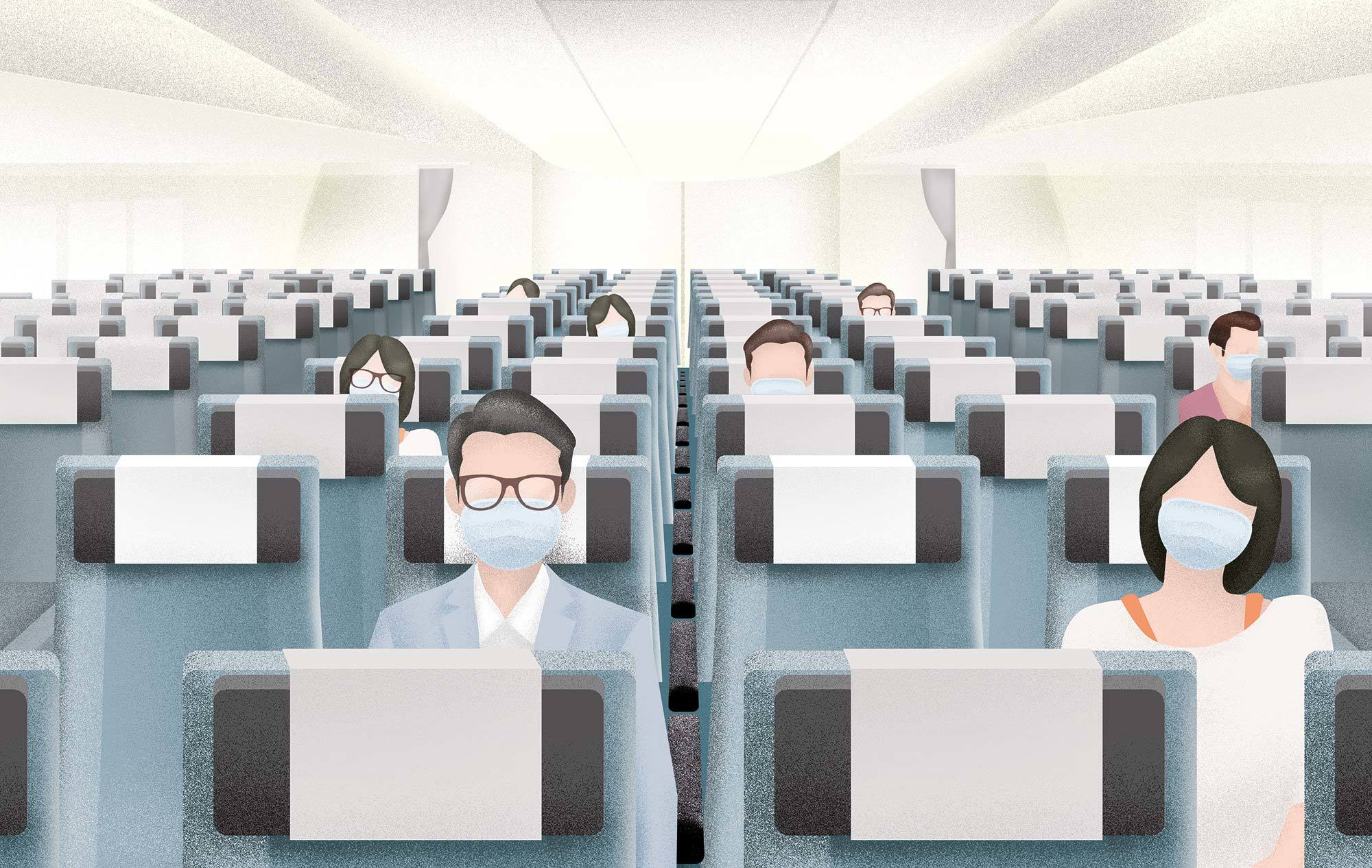In June 1994, Cathay Pacific received its 18th Boeing 747-400 jumbo jet. It was a milestone of sorts, not least because of the new ‘brushwing’ livery. But this one came shiny from the showroom with a new feature that the previous 17 didn’t have.
In the armrest of every new-era business class seat was a small personal TV, giving passengers the option to watch six – count them – channels on the entertainment system, which featured ‘non-stop movies, magazine-style documentaries and video clips’ including ‘the best Mandarin, Cantonese and Japanese movies’.
It marked a move away from the shared bulkhead screens and hollow stethoscope-style ‘ear tubes’ that plugged into a muffled speaker in the armrest. It also showed just how far inflight entertainment had progressed in the 70 years since Imperial Airlines lugged a cinema projector onto a converted First World War bomber to screen a silent version of Sir Arthur Conan Doyle’s The Lost World on a flight from London to Paris.
To get to the on-demand systems of today, there were many stopping points along the way, some gloriously impractical. Take the reel system used by some American airlines in the 1960s. The film ran through the aircraft projecting sound and vision through 20 monitors in the cabin. On some aircraft the trail of film was 90 metres long, enabling an early – and literal – form of ‘catch up’ viewing, with the last monitor in the loop showing the opening credits seven and a half minutes after the first screen.
By 1996, it wasn’t just Cathay Pacific passengers at the front of the plane who could enjoy seat-back entertainment. That year, it was rolled out to Cathay Pacific’s economy cabin: timely, given that this year was also the inauguration of the ultra-long-haul Hong Kong to New York service.
Since then, the trend of digitisation has led to improving quality and a reduction in size and – crucially for airlines – weight of the entertainment equipment. It means that inflight entertainment options today include more than 100 movies, 500 TV shows and an audio library of more than 3,500 tracks. And with Wi-Fi connectivity on the new Airbus A350, who would be brave enough to predict what inflight entertainment will look like in 20 years?













